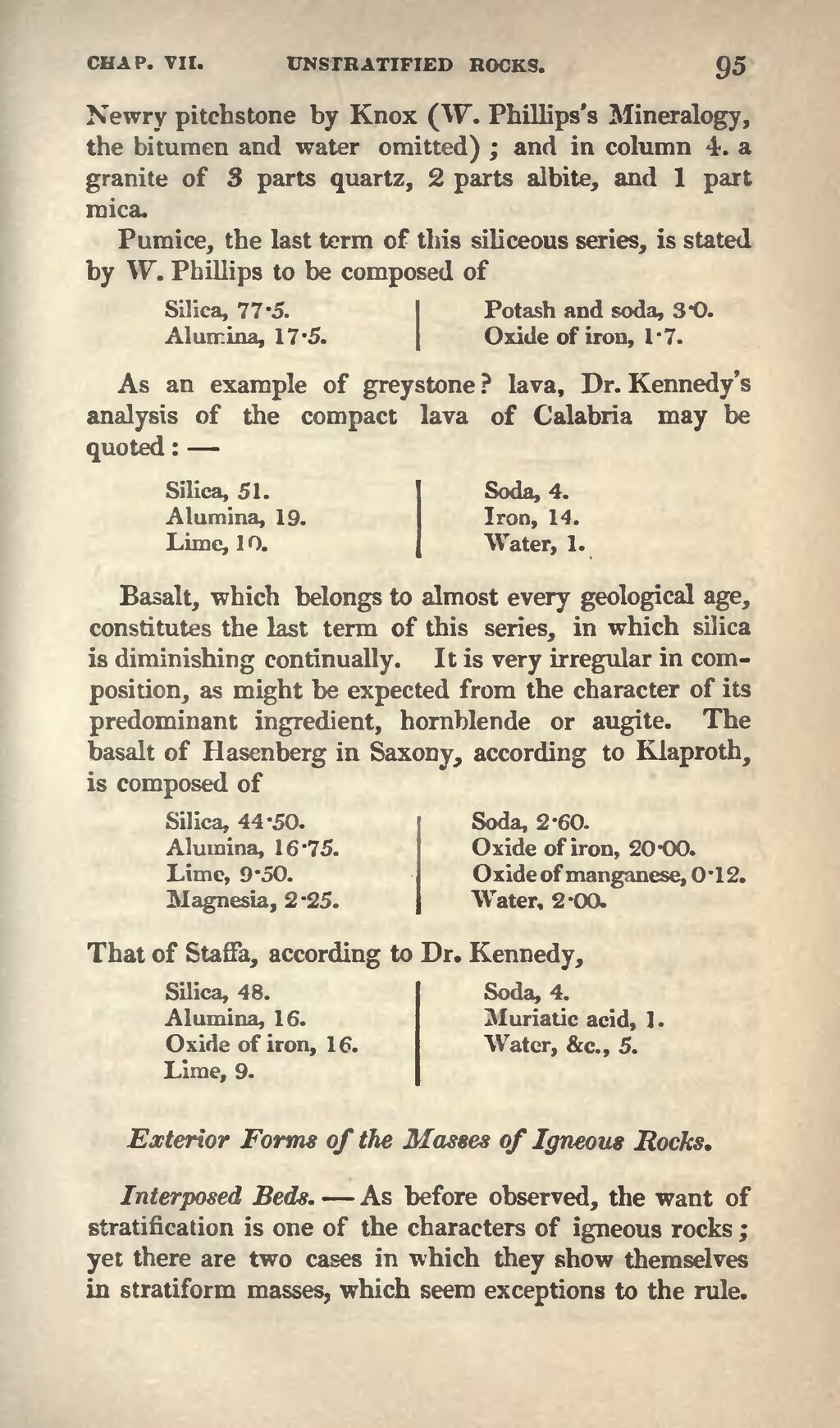Newry pitchstone by Knox (W. Phillips's Mineralogy, the bitumen and water omitted); and in column 4. a granite of 3 parts quartz, 2 parts albite, and 1 part mica.
Pumice, the last term of this siliceous series, is stated by W. Phillips to be composed of
| Silica, 77.5 | Potash and soda, 3.0. |
| Alumina, 17.5. | Oxide of iron, 1.7. |
As an example of greystone? lava, Dr. Kennedy's analysis of the compact lava of Calabria may be quoted:—
| Silica, 51. | Soda, 4. |
| Alumina, 19. | Iron, 14. |
| Lime, 10. | Water, 1. |
Basalt, which belongs to almost every geological age, constitutes the last term of this series, in which silica is diminishing continually. It is very irregular in composition, as might be expected from the character of its predominant ingredient, hornblende or augite. The basalt of Hasenberg in Saxony, according to Klaproth, is composed of
| Silica, 44.50. | Soda, 2.60. |
| Alumina, 16.75. | Oxide of iron, 20.00. |
| Lime, 9.50. | Oxide of manganese, 0.12. |
| Magnesia, 2.25. | Water, 2.00. |
That of Staffa, according to Dr. Kennedy,
| Silica, 48. | Soda, 4. |
| Alumina, 16. | Muriatic acid, 1. |
| Oxide of iron, 16. | Water, &c., 5. |
| Lime, 9. |
Exterior Forms of the Masses of Igneous Rocks.
Interposed Beds.—As before observed, the want of stratification is one of the characters of igneous rocks; yet there are two cases in which they show themselves in stratiform masses, which seem exceptions to the rule.
